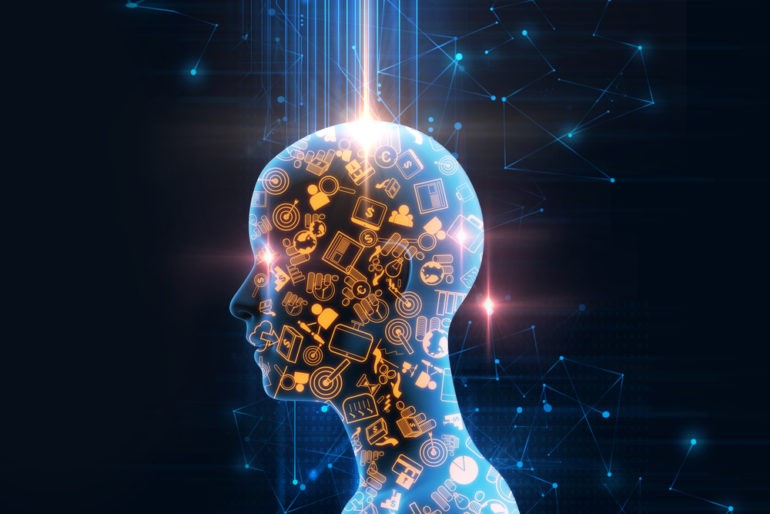
Img Source: Cbronline
The Bank of England recently published ananalysis suggesting that modeling the impact of the “fourth industrial revolution,” the lingo given to the emerging AI-driven technocracy, using past models is inherently flawed given its unprecedented scope and speed of diffusion.
Said to transform entire industries and job sectors, most economists welcome the AI revolution as an uplifting agent of humankind, sacrificing a few loose ends while the remaining factors are reshuffled for the betterment of the whole. Economists Mauricio Armellini and Tim Pike are a contrary lot, imploring their fellow economists to consider the possibility of large-scale unemployment numbering in the millions as the new economy’s adoption rate cannot keep up with the fallout of obsolescence — a radical departure from historical trends.
Differing opinions
The conservative view holds that disruptive technologies have traditionally had a labor-augmenting effect in the past, when improvements in manufacturing productivity shed a few obsolete jobs, but the ensuing increase in GDP per capita result in a net increase of newer jobs within the service industry. Meaning, automation doesn’t just destroy jobs, it also creates them.
When ATMS jobs debuted in the 1970s, points out the Guardian, bank teller jobs weren’t entirely phased out but rebranded as service providers focused on selling financial services rather than dispensing cash. The introduction of automobiles reduced the number of railroad workers but created new jobs in the haulage and transportation.
In every instance, these changes took many years — even decades — to implement, allowing the economy to adjust slowly. Economists like Armellini and Pike warn that the next industrial revolution won’t be so mutually exclusive, arguing that mass dissemination of robotics and AI threatens to disruptive multiple industries simultaneously, giving society little respite.
And the stakes are high: A recent report by Deloitte forecasts that one-third of jobs in the UK are at “high risk,” including “losses of over 2 million jobs in retail, 1½ million jobs in transportation and storage, and 1¼ million jobs in health and social care.” According to the United States’ Bureau of Labor Statistics , 15.36 million people are employed in the retail industry, with another 4.64 million in the transportation and storage. And that’s just looking at two specific industries. AI-driven automation could potentially affect all low-skill or manual labor jobs.
Why is it different this time around?
Ultimately, it all comes down to technological progress and its rate of adoption. To illustrate, let’s examine the number of “General Purpose Technologies” (GPTs) that have originated in the first 19 centuries AD versus the 20th century alone. GPT, a term Armellini and Pike borrow from technologist Hermann Hauser, represents all the major disruptive technologies with wide application in human history. Of these, the printing press, the factory system, the steam engine, railways, the combustion engine, and electricity, all date back to the 20th century and took several decades to implement.
Fast forward to the 20th century, and we see the rate of progress rapidly speed up, with eight GPTs originating in this century alone, including automobiles, airplanes, the computer, the internet, biotechnology, and nanotechnology. Henceforth, “most recent innovations have been scalable much more quickly and cheaply. They have also been associated with the emergence of giant technology corporations — the combined market capitalization of Apple, Google, Microsoft, Amazon, and Facebook is currently about $2.5 trillion,” said Armellini and Pike. Factor in the exponential growth in computing capability and the machine-learning it promotes and such trends are likely to continue if not grow.
The ambiguity of prediction, or how long before the disruption begins?
Armellini and Pike suggest that while the rate and scale of adopt are difficult to forecast, the sole certainty is that nations seeking to balance income inequality inadvertently create a self-fulfilling prophecy that incentives automation. Policies like increasing minimum wage may offer a very short-term benefit, but it encourages employers to invest in money-saving machinery and equipment.*
Incentives to invest in automation also correlate with declining birth rates. Japan, with the largest robotics industry in the world, represents technology’s response to a dwindling workforce resulting from falling fertility rates; at the current rates, it’s expected that population will decline by as much as one-fifth over the next 50 years. The Japanese robotics sector employs 250,000 people.
Opponents often argue that robots can only perform a limited number of well-define tasks within a controlled environment, rarely brushing shoulders with the humans involved in intellectual or empathetic roles.
To a large extent, this is true, but recent advances show that technology is rapidly progressing into the realm of mimicking human intelligence, as demonstrated by the computer software AlphaGo’s defeat of professional human player Lee Sedol at Go. “Given that the average game has an almost infinite number of outcomes, the computer must mimic cognitive skills such as intuition and strategy, rather than rely purely on brute force in analyzing all plausible move sequences — which is how computers were programmed to beat the world’s chess champions nearly twenty years ago,” the paper explains.
Perhaps a more practical and immediate application of AI can be seen in its self-driving vehicles and retail, sectors employing 6% of the entire US population. After all, Amazon’s en route toward pioneering the grocery stores without cashiers thanks to a combination of computer vision and machine-learning.
Yay or nay?
The question remains: Will AI-automation boost productivity and raise GDP, thereby creating new jobs, or will it ensure the rich get richer as labor costs go down? Or is this all hyperbole perpetuated by armchair technologists without any actual knowledge of constraints involved? Tell us your thoughts in the comments below.
Source: Bank of England
Advertisement
Learn more about Electronic Products Magazine





